Valparaiso and La Serena
80 Miles south of Juan Fernandez (Robinson Crusoe) Island, Chile
We left Puerto Montt, Chile on 16 September to start the long journey across the Pacific. Looking back, our time in South America has been a great experience and we're sad to be leaving. But it's time to move on and enjoy new experiences.
While waiting for the weather to improve and having completed most of the boat chores, we took a two week overland trip to an area just north of Santiago -- La Serena and the Elqui Valley. The Mediterranean climate and series of rivers that flow from the Andes to the coast provide year round irrigation and make ideal agricultural conditions. Orchards of citrus fruits, avocados, nuts and pisco grapes dominate the landscape. And the exceptional transparency of northern Chile's skies and very little air pollution make the region ideal for the largest concentration of the world's major astronomical observatories.
Our first stop on the way was Valparaiso, a 2 hour bus ride from Santiago. Today it is Chile's second largest port. Founded as a port in 1542 it became a major port of call and resupply center for ships coming from the Straits of Magellan headed for the west coast of North America. A city of hills encircling a wide bay, it is known for it's colorful array of brightly painted houses that ramble down the steep hills to the bay. A collection of 15 funicular were built between 1883 - 1916 to provide access from the lower town to the new residential quarters spreading up the hillsides. Many cafes and restaurants are found in the labyrinth of streets in the hillside neighborhoods.
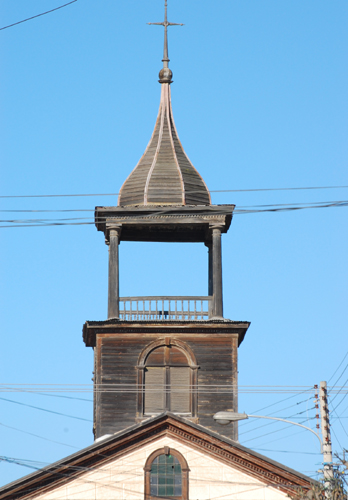 Unfortunately, Valparaiso is also known for it's crime and our stay was cut short when our small digital camera was ripped off Nancy's wrist as the thief ran up behind Nancy as she was putting it away. Luckily we still had our Nikon digital camera but the event didn't make us feel comfortable and we left the next day for La Serena, and a more relaxed and comfortable town.
Unfortunately, Valparaiso is also known for it's crime and our stay was cut short when our small digital camera was ripped off Nancy's wrist as the thief ran up behind Nancy as she was putting it away. Luckily we still had our Nikon digital camera but the event didn't make us feel comfortable and we left the next day for La Serena, and a more relaxed and comfortable town. 
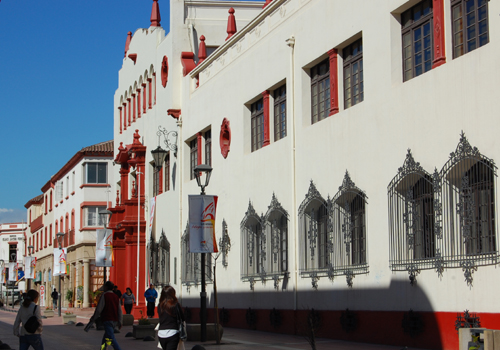 La Serena is Chile's second oldest city, built in 1544. Four years after it was first established is was burned down only to be rebuilt in 1549 as a Spanish staging post on the way to Peru. La Serena was one of a string of ports on South America's Pacific seaboard to be regularly attacked and plundered by bands of buccaneers who looted the Spanish colonies of the gold, silver and other riches that they had first plundered from the indigenous peoples -- turn-about is fair play. Hometown to President Gabriel Gonzalez Videla, it was remodeled during his presidency of 1946 - 1956 and returned it's scheme to a colonial Spanish style. The city has 29 churches dating from 1627. La Serena provides a base for many tourists visiting the Elqui Valley, known for it's pisco production, and visits to the local observatories.
La Serena is Chile's second oldest city, built in 1544. Four years after it was first established is was burned down only to be rebuilt in 1549 as a Spanish staging post on the way to Peru. La Serena was one of a string of ports on South America's Pacific seaboard to be regularly attacked and plundered by bands of buccaneers who looted the Spanish colonies of the gold, silver and other riches that they had first plundered from the indigenous peoples -- turn-about is fair play. Hometown to President Gabriel Gonzalez Videla, it was remodeled during his presidency of 1946 - 1956 and returned it's scheme to a colonial Spanish style. The city has 29 churches dating from 1627. La Serena provides a base for many tourists visiting the Elqui Valley, known for it's pisco production, and visits to the local observatories.
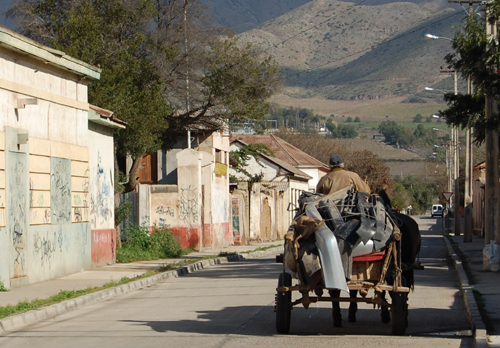
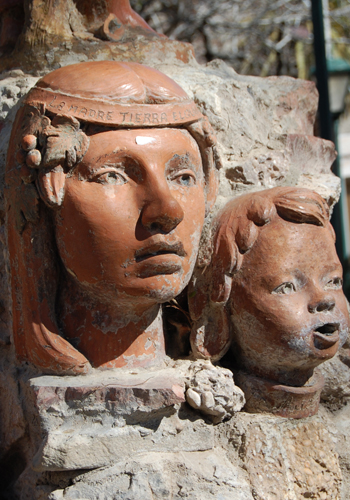 Pisco, Chile's national drink, is a brandy made from the distilled wine of muscatel grapes. The Elqui Valley provides ideal growing conditions, high temperatures, bright sunshine, and light alkaline soil, to produce grapes with a high sugar content and low acidity, perfect for distillation. It is most commonly used to make a drink called pisco sour, a mixture of pisco, lemon juice and sugar.
Pisco, Chile's national drink, is a brandy made from the distilled wine of muscatel grapes. The Elqui Valley provides ideal growing conditions, high temperatures, bright sunshine, and light alkaline soil, to produce grapes with a high sugar content and low acidity, perfect for distillation. It is most commonly used to make a drink called pisco sour, a mixture of pisco, lemon juice and sugar.
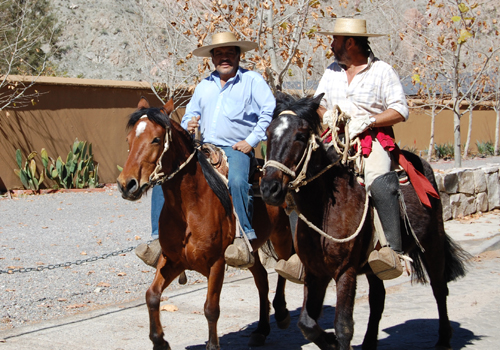 After two nights in La Serena we traveled up the Elqui Valley to the small town of Vicuna, home to Gabriela Mistral, who in 1945 became the first Latin American to be awarded the Nobel Prize for Literature. Many of her poems spoke of her beloved Elqui Valley, which she described as "a cry of nature rising amidst the opaque mountains and intense blue sky." In 1916 while teaching in Temuco, Gabriela encountered a 12 year old boy who in 1971 would become Chile's second Nobel Laureate, Pablo Neruda. The Mamalluca Observatory is located outside Vicuna, and is the only observatory in the region offering night tours. A visit to the observatory was one of the reasons for staying in Vicuna but heavy rains earlier in the week made the road inaccessible and tours were canceled. We took a day and traveled further up the valley to Pisco Elqui in hopes of visiting a pisco distillery but being winter and mid-week, the distilleries were closed as well. Oh well.
After two nights in La Serena we traveled up the Elqui Valley to the small town of Vicuna, home to Gabriela Mistral, who in 1945 became the first Latin American to be awarded the Nobel Prize for Literature. Many of her poems spoke of her beloved Elqui Valley, which she described as "a cry of nature rising amidst the opaque mountains and intense blue sky." In 1916 while teaching in Temuco, Gabriela encountered a 12 year old boy who in 1971 would become Chile's second Nobel Laureate, Pablo Neruda. The Mamalluca Observatory is located outside Vicuna, and is the only observatory in the region offering night tours. A visit to the observatory was one of the reasons for staying in Vicuna but heavy rains earlier in the week made the road inaccessible and tours were canceled. We took a day and traveled further up the valley to Pisco Elqui in hopes of visiting a pisco distillery but being winter and mid-week, the distilleries were closed as well. Oh well.
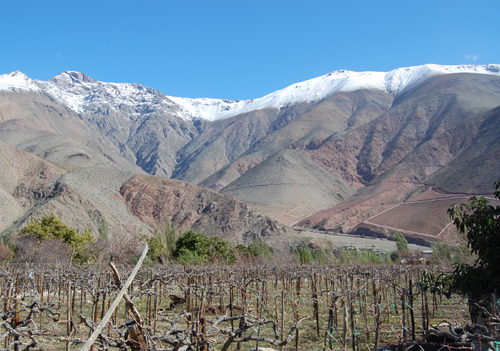
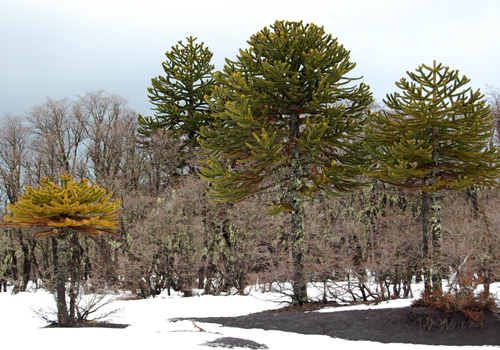 We returned to La Serena for a few more days before starting the return trip to Puerto Montt. We stopped in Villarica, in Chile's Lake District, to visit with Wolfgang, who runs the Patagonia Cruisers Net, an HF radio daily network. (See earlier posting about such nets, and the part this one played in an emergency this season.) Wolfgang and his wife Gabby have 20 hectares with a main house and guest house with Volcan Villarica dominating the skyline. They have about 15 sheep, 20 new lambs, and 5 alpacas. We spent two nights visiting with Wolfgang and enjoying the peacefulness of his lovely home.
We returned to La Serena for a few more days before starting the return trip to Puerto Montt. We stopped in Villarica, in Chile's Lake District, to visit with Wolfgang, who runs the Patagonia Cruisers Net, an HF radio daily network. (See earlier posting about such nets, and the part this one played in an emergency this season.) Wolfgang and his wife Gabby have 20 hectares with a main house and guest house with Volcan Villarica dominating the skyline. They have about 15 sheep, 20 new lambs, and 5 alpacas. We spent two nights visiting with Wolfgang and enjoying the peacefulness of his lovely home.
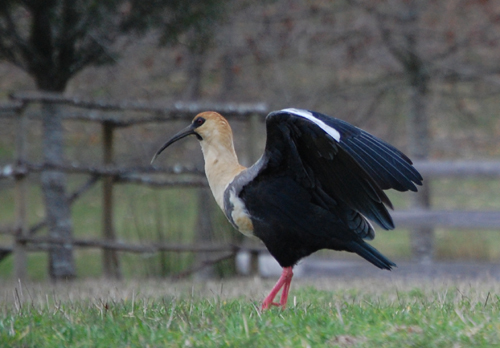
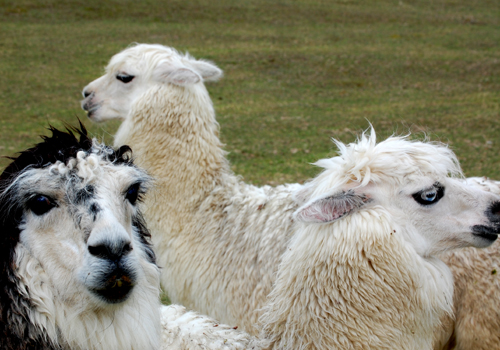
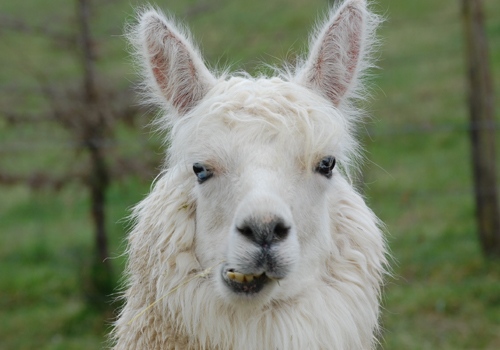 It was time to renew our visas so from Villarica we took a bus over Paso Mamuil Malal into Argentina. The east side of the pass is home to the araucaria tree, also know as the monkey puzzle tree, found only in the cordillera of Neuquen Province, Argentina, and at similar latitudes across the border in Chile. These trees grow very slowly and can live to over 1,000 years. We spent one night in Argentina before returning back over the Andes to Chile and another 90 day visa.
It was time to renew our visas so from Villarica we took a bus over Paso Mamuil Malal into Argentina. The east side of the pass is home to the araucaria tree, also know as the monkey puzzle tree, found only in the cordillera of Neuquen Province, Argentina, and at similar latitudes across the border in Chile. These trees grow very slowly and can live to over 1,000 years. We spent one night in Argentina before returning back over the Andes to Chile and another 90 day visa.
22 September 2008 - Update
A look at the weather forecast for the next 5 days shows mostly northerly winds, making a stop at Juan Fernandez untenable. So we've decided to forego a stop there and continue on our way to the Marquesas, another 4,400 nm. In some ways it's probably just as well, as we now have our sea legs and just settled into the sleep patterns necessary for watches. Each day we cruise further north we shed another layer of clothing. French Polynesia here we come.
Labels: Chile, French Polynesia, La Serena, Tamara, Valparaiso



0 Comments:
Post a Comment
<< Home